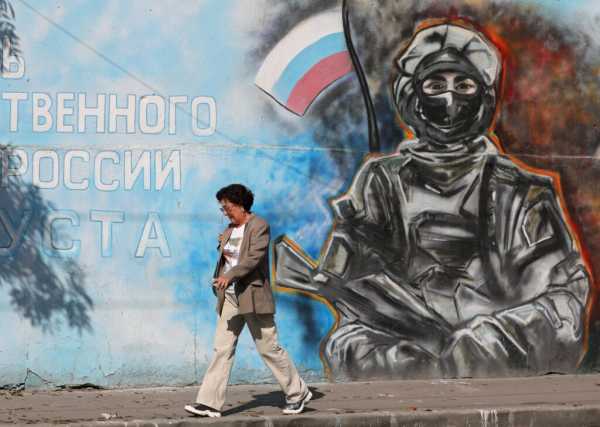
With international attention firmly fixed on the Russian army’s advances in eastern Ukraine and the Ukrainian invasion of Russia’s Kursk region, it is easy to overlook important developments taking place further south in Crimea. During 2024, Ukraine has achieved a number of strategic successes in and around the Russian-occupied peninsula that are worthy of closer attention and could shape the ultimate outcome of the war.
Since the beginning of the year, Ukraine has hit more than a dozen major targets in the peninsula that play important roles in the Russian military strategy in Crimea itself and in Russian-occupied southern Ukraine. This has included attacks on Russian air bases, radar stations, and communications points, along with the destruction of multiple Russian air defense systems.
In parallel to the depletion of Russia’s air power and communications infrastructure in Crimea, Ukraine has also conducted an innovative maritime offensive against the Russian Black Sea Fleet. While few initially gave Kyiv much chance in the war at sea, Ukraine has used a combination of marine drones and missiles to sink or disable approximately one-third of the entire Russian fleet. This has forced the Kremlin to withdraw most of its remaining warships from Crimea to the safety of Russia itself. In July 2024, the Ukrainian Navy reported that the last Russian warships had also left the nearby Sea of Azov.
Faced with these setbacks, Russia has reportedly moved some of its limited air defense systems away from northwestern Crimea and concentrated them close to the Crimean Bridge, which connects the occupied peninsula to Russia across the Kerch Strait. This is leaving other parts of Crimea increasingly vulnerable to attack.
Another key aspect of Ukraine’s campaign against the Russian occupation of Crimea is the targeting of key logistics routes. Since the Russian invasion of Ukraine began more than a decade ago, Moscow has sought to militarize Crimea. Following the full-scale invasion of Ukraine in 2022, the peninsula has served as a key logistical hub for Russian forces fighting in southern Ukraine.
Despite the development of additional overland rail routes connecting Russia to occupied regions of mainland Ukraine, Crimea continues to play an important logistical role in the war. In a bid to weaken the Russian army’s supply chains and isolate Crimea, Ukraine has targeted the ferries used to transport military supplies across the Kerch Strait from Russia to Crimea.
In spring and summer 2024, Ukraine carried out a series of strikes on ferries in Crimea itself and in Russia’s neighboring Krasnodar region. These attacks succeeded in cutting key supply routes for the Russian military, forcing Moscow to explore improvised alternatives such as the use of barges.
Ukraine’s efforts to isolate Crimea have benefited from the use of Western weapons including US-supplied ATACMS missiles and cruise missiles provided by Kyiv’s British and French partners. Crimea is internationally recognized as part of Ukraine, so restrictions that prevent the use of Western weapons inside Russia do not apply. However, Ukrainian President Volodymyr Zelenskyy indicated in July 2024 that some limitations remain on Ukraine’s ability to use Western-supplied arms in Crimea. “I will tell you honestly, we cannot use everything and everywhere in Crimea,” he commented.
Ukrainian attacks on Crimea are a huge source of embarrassment for Russia. The 2014 occupation of the Ukrainian peninsula is routinely portrayed in Kremlin propaganda as the greatest achievement of Vladimir Putin’s entire reign and a symbol of Russia’s return to great power status. Putin’s current inability to defend Crimea is therefore widely perceived as a personal humiliation.
For the time being, Moscow remains in denial over the deteriorating security situation in Crimea and continues to promote the peninsula as a safe holiday destination. However, if the current Ukrainian campaign continues to gain momentum, the Kremlin will be forced to abandon this business-as-usual approach and acknowledge that the Russian occupation of Crimea is under threat.
Russia’s war against Ukraine began in 2014 with the seizure of Crimea. Many analysts believe the war can only be brought to an end by liberating the peninsula from Russian control. It is still far too early to speak about the impending end of the Russian occupation. Nevertheless, with the Black Sea Fleet in retreat, logistical connections disrupted, and air defenses depleted, the Kremlin’s grip on Crimea already appears to be significantly weaker than it was when the full-scale invasion began two and half years ago.
Serhii Kuzan is Chairman of the Ukrainian Security and Cooperation Center (USCC). He formerly served as an adviser to the Ukrainian Ministry of Defense (2022-2023) and as an advisor to the Secretary of Ukraine’s National Security and Defense Council (2014).
Source: euractiv.com



